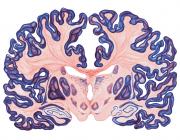A causal role for the pulvinar in coordinating task-independent cortico-cortical interactions
Publication Year
2021
Type
Journal Article
Abstract
The pulvinar is the largest nucleus in the primate thalamus and has topographically organized connections with multiple cortical areas, thereby forming extensive cortico-pulvino-cortical input–output loops. Neurophysiological studies have suggested a role for these transthalamic pathways in regulating information transmission between cortical areas. However, evidence for a causal role of the pulvinar in regulating cortico–cortical interactions is sparse and it is not known whether pulvinar's influences on cortical networks are task-dependent or, alternatively, reflect more basic large-scale network properties that maintain functional connectivity across networks regardless of active task demands. In the current study, under passive viewing conditions, we conducted simultaneous electrophysiological recordings from ventral (area V4) and dorsal (lateral intraparietal area [LIP]) nodes of macaque visual system, while reversibly inactivating the dorsal part of the lateral pulvinar (dPL), which shares common anatomical connectivity with V4 and LIP, to probe a causal role of the pulvinar. Our results show a significant reduction in local field potential phase coherence between LIP and V4 in low frequencies (4–15 Hz) following muscimol injection into dPL. At the local level, no significant changes in firing rates or LFP power were observed in LIP or in V4 following dPL inactivation. Synchronization between pulvinar spikes and cortical LFP phase decreased in low frequencies (4–15 Hz) both in LIP and V4, while the low frequency synchronization between LIP spikes and pulvinar phase increased. These results indicate a causal role for pulvinar in synchronizing neural activity between interconnected cortical nodes of a large-scale network, even in the absence of an active task state.
Journal
Journal of Comparative Neurology
Volume
529
Issue
17

